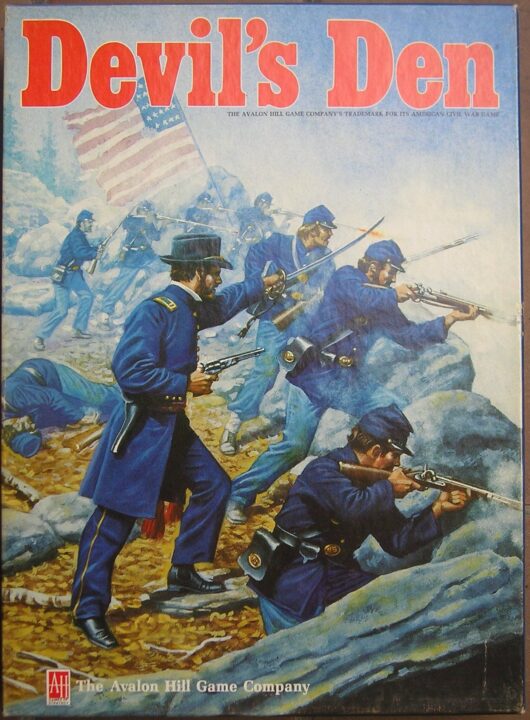If you’ve ever wanted to see your friends pretend to hug you while plotting your doom, this review of Devil’s Den is for you. My gaming group threw ourselves into the chaos (with snacks, of course) and came out the other side with stories, laughter, and more than a little suspicion. From sneaky alliances to unexpected twists, and with components that look sharp but occasionally spill all over your table, Devil’s Den might just be the drama bomb your next game night deserves. But is the fun worth your hard-earned cash? I’ve tested it, argued with my friends, and lived to tell the tale—so grab your pitchfork (or coffee) and read on.
How It Plays
Setting up
First, dump the main board right in the middle of your table. Hand out player boards, tokens, and those snazzy character minis. Everyone gets their secret goal card—do not peek at your neighbor’s, unless you want to lose friends fast. Put the event deck and resource piles within arm’s reach. Last one seated shuffles the deck (house rule: no shuffling for sweaty palms).
Gameplay
Every round, you take turns moving your character, collecting resources, and triggering events. Form alliances, betray someone (it’s in the name), and argue about whether a truce counts if you cross your fingers under the table. Event cards throw random, hilarious chaos into the mix—sometimes you’ll cackle, sometimes you’ll want to flip the table (don’t, the pieces will go everywhere). Negotiate, backstab, and watch out for the Devil’s Minion—it’s always the quiet one at the table.
Winning the game
To win, finish your secret goal before anyone else. Sometimes that means collecting a pile of cursed gems, sometimes you plot to kick everyone else off the board. When someone shouts, “I did it!” (or just stands up and does a victory dance), check those goals. If legit, they win. If not, prepare for another round of loud accusations and snacks thrown in protest.
Want to know more? Read our extensive strategy guide for Devil’s Den.
Gameplay Mechanics and Game Flow in Devil’s Den
Alright, let’s talk about how Devil’s Den actually plays out, because this box isn’t just sitting on your shelf looking spooky. It’s a wild ride once you get the pieces moving. From the first turn, you’re staring down your opponents, plotting moves, and trying to outsmart everyone around the board. Devil’s Den hooks you with its core mechanic—players form secret alliances and then break them faster than I can break my diet during board game night. You’ll place your little cultist tokens, make deals (mostly lies), and trigger sneaky powers that flip the tables completely.
One of my favorite things is the way movement works—each turn, you get to sneak your cultists across the board, dodging traps or ambushing rivals. The board isn’t massive, so you have to plan those movements with some actual brainpower. If you’re like me, you’ll also try to bluff your way into a better position, but half the time, you’ll just end up looking lost. Oh, and every few rounds, the game throws a curveball event card at you. Sometimes it helps you. Sometimes it messes you up so bad you consider flipping the table. (Don’t do it. The components are nice.)
The flow is smooth—action, reaction, betrayal, repeat. There’s no endless waiting or downtime, even with a full group. I played with five friends, and no one wandered off to scroll their phone. This is a huge win. It kept us on our toes, and every single turn felt like it mattered. Trust me, it’s not a game where you can nap until your next turn.
But how does Devil’s Den balance brain-burning strategy with the kind of chaos that makes board games legendary? Well, stick around, because that’s what we’re tackling in the next section—and oh boy, have I got stories.
How Fair is Devil’s Den? The Tug-of-War Between Strategy and Luck
If you have ever flipped a table because a random event card ruined your evil genius plan, you’ve played games like Devil’s Den. The designers clearly wanted to give us a mix of careful plotting and wild, what-the-heck-just-happened moments. Now, I’m a person who likes to outsmart my friends (and occasionally cheat at Uno, but don’t tell them), so balance matters to me. Devil’s Den tries to walk the tightrope between making clever moves and falling prey to the unpredictable.
On the strategy side, you have real choices: where to move, who to trust, and when to backstab your best mate for a shot at victory. The map offers several ways to sneak and outmaneuver, and planning two turns ahead will sometimes pay off. There are enough options that you feel your choices matter, at least until things go sideways.
But here’s the catch—luck can swoop in like a rogue seagull stealing your chips. Event cards can turn the game upside down, and some dice rolls feel like they’re rolling for your sanity instead of your success. In one game, my friend Sam was leading for an hour, only to lose because he drew the “Devil’s Whim” card and had to start over on the far side of the map. He did not take it well, but at least he got more snacks.
So, Devil’s Den is fun, but the luck element can poke you in the eye just when you think you’ve got things under control. If you want a pure strategy game, you might get frustrated. But if you enjoy chaos with your cunning, you’ll have a blast.
But enough about the rules and randomness—let’s crack open the box and see if Devil’s Den is a feast for the eyes or just another cardboard jumble in the next section: Artwork and component quality!
Artwork & Components in Devil’s Den: Devilishly Good or a Deal with the Devil?
If I had a coin for every time an evil grin caught my eye in Devil’s Den, I could probably afford another board game! The artwork in this game is as dramatic as an overcooked soap opera. Every card, every tile, and even the rulebook has little details that scream, ‘Hey, this game takes itself just the right amount of seriously.’ I don’t know who the artist is, but I hope they eat a LOT of spooky cereal for inspiration.
The main board is thick and feels way more reliable than my wifi. The colors are bold. The illustrations, especially the little demons and their lairs, look like something between Saturday morning cartoons and a metal album cover. It sets the mood perfectly whether you’re scheming alone or plotting with friends to ruin someone else’s day. Speaking of mood, the miniatures—oh boy!—they’re chunky, full of character, and don’t tip over if you so much as breathe on the table (looking at you, wobbly meeples from other games).
Card stock quality? Surprisingly good. I tried to bend a card by accident (super intense moment, don’t judge) and it snapped back like a gymnast. The tokens are easy to handle, and the game even comes with a few extra, which is amazing for those of us who think our house pets should join the chaos. However, the one thing I noticed was the box insert. It’s about as useful as an umbrella in a hurricane—expect some rattling inside if you ever move it.
Alright, that’s enough ogling the art. Next up: does Devil’s Den keep you coming back for more, or does it gather dust after one epic session? Hint: there might be betrayal involved!
Replayability & Player Mischief in Devil’s Den
If you’ve ever dreamed of backstabbing your friends while pretending to be a demon lord, Devil’s Den is your ticket. The game shines brightest when you’re plotting, whispering, and forming alliances that last about as long as a slice of pizza at my house. Every session with my group felt unique, and that’s not just because someone always flipped the table after a surprise betrayal.
The replay value in Devil’s Den is pretty strong for a game that leans on social manipulation. Thanks to a mix of hidden roles and shifting objectives, no two games end the same way. One round you’ll be teaming up, the next you’ll learn your “best friend” just sold you out for two souls and a bonus move. There are enough event cards and optional rules to keep things fresh, though after about a dozen plays, you’ll start to see familiar patterns. Still, with different groups, the drama changes up. Try playing with your in-laws if you’re feeling risky. (Not responsible for family feuds, by the way.)
Player interaction is at the heart of Devil’s Den. You’ll argue, plead, and occasionally bribe to get ahead. Passive players might feel lost, but our hyper-competitive crew thrived on the drama. If you want a quiet, no-conflict night, play something else. If you want to pretend you’re part of a cutthroat demon soap opera, this one’s for you.
All things considered, I recommend Devil’s Den for groups who love drama and plotting. If your friends are more into solo puzzles or hate being tricked, maybe leave this box on the shelf. But if you’re like us and enjoy a bit of friendly betrayal, it’s a devilishly good time.
Conclusion
Alright, that’s a wrap on my review of Devil’s Den! After battling my friends (and our trust issues), I can say this game is a wild ride. It scores big on theme, art, and messy alliances. You’ll laugh, you’ll curse someone’s name, and you’ll probably knock over a game piece or two. The luck factor can tip the scales and I wish the box insert was less wobbly, but Devil’s Den still delivers when you want chaos and drama with your game night snacks. If you crave pure strategy, you might want to look elsewhere. But if betrayal and social shenanigans are your jam, this is one to try. Thanks for reading, and remember: trust no one… unless you’re losing!


